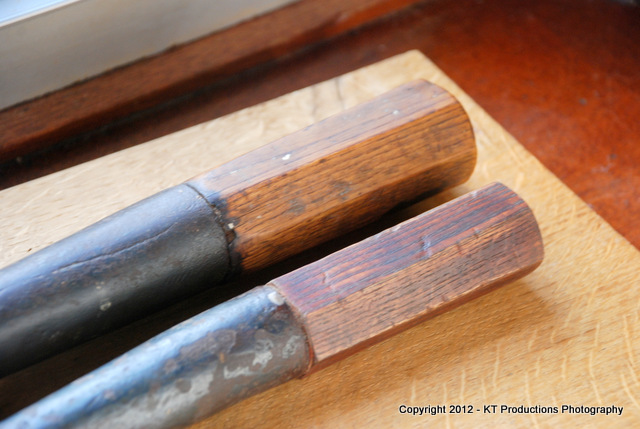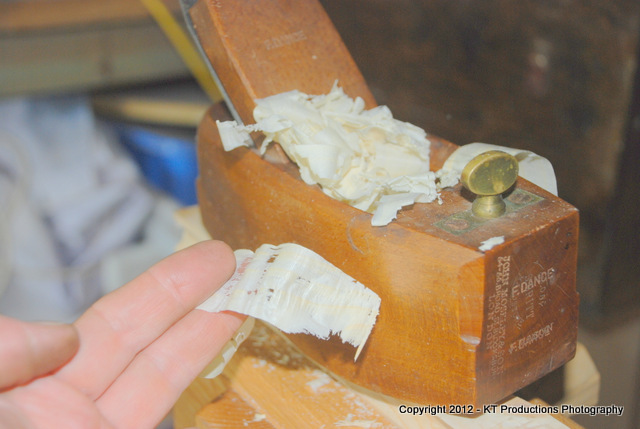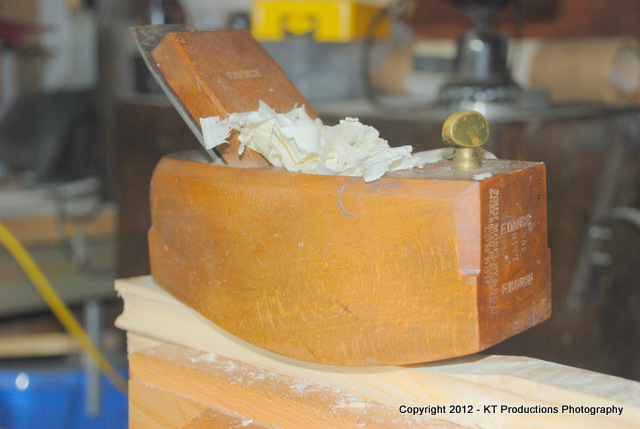jimi43
Established Member
Hi Guys....
Over on the General Woodworking forum I posted the haul I found at the weekend....and as AndyT says...this might prove to be a collection so I thought I would start another thread in the right forum so we can research the provenance of the tools.
Leaving the Kenyon pig sticker aside for the moment...I wanted to post something about the woodie adjustable compass plane which I found out tonight.....

Looking closely not at the Moseley stamp...but at the retailer..."Sold By S.Britt Maidstone"....

In the 1871 census for Kent I found this....
At the age of 44 and as "HEAD" ironmonger...he must be the S.Britt on the stamp. Firstly because it is an unusual name and obviously...and ironmonger.
In fact this....from the Sussex Archives for Rye gives even more confirmation:
To that would date this around that time....
Assuming the other tools are from the same area...and source...it is possible that the owner would have bought the other tools at or around the same time.
As for the hammer....

....I think it is hand forged...I can see the forge weld between the head and the straps...but I will do some close-ups tomorrow.
Jim
Over on the General Woodworking forum I posted the haul I found at the weekend....and as AndyT says...this might prove to be a collection so I thought I would start another thread in the right forum so we can research the provenance of the tools.
Leaving the Kenyon pig sticker aside for the moment...I wanted to post something about the woodie adjustable compass plane which I found out tonight.....

Looking closely not at the Moseley stamp...but at the retailer..."Sold By S.Britt Maidstone"....

In the 1871 census for Kent I found this....
1871 Maidstone still - 21 U[pper] Stone St
RG10/943 Folio 31 Page 26
Stephen Britt 44 HEAD Ironmonger born Rye
Mary A 28 Wife Maidstone
George Bengie or perhaps Bougie 4 -Wifes son- born Maidstone
At the age of 44 and as "HEAD" ironmonger...he must be the S.Britt on the stamp. Firstly because it is an unusual name and obviously...and ironmonger.
In fact this....from the Sussex Archives for Rye gives even more confirmation:
STEPHEN BRITT 1827 - 1905 b: January 1827 in Rye, East Sussex,
baptised at St Mary's church Baptism: 12 January 1827 Baptised at St Mary's,
Rye, East Sussex. Father was a seaman d: Aft. 1905 in Maidstone, Kent. He
was a millwright (1851) ironmonger and later mayor of Maidstone.
To that would date this around that time....
Assuming the other tools are from the same area...and source...it is possible that the owner would have bought the other tools at or around the same time.
As for the hammer....

....I think it is hand forged...I can see the forge weld between the head and the straps...but I will do some close-ups tomorrow.
Jim

























































